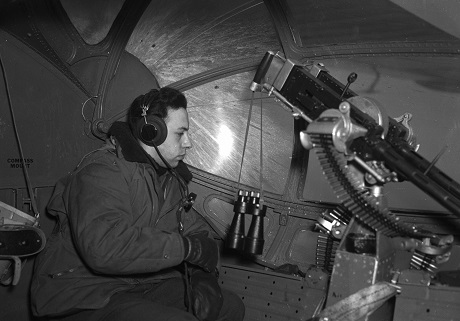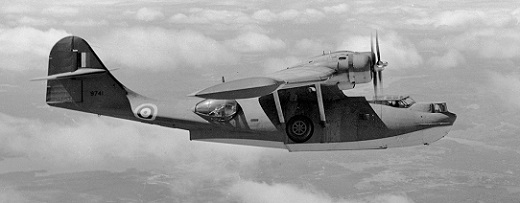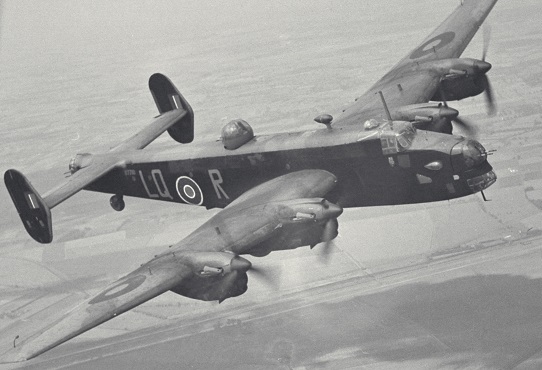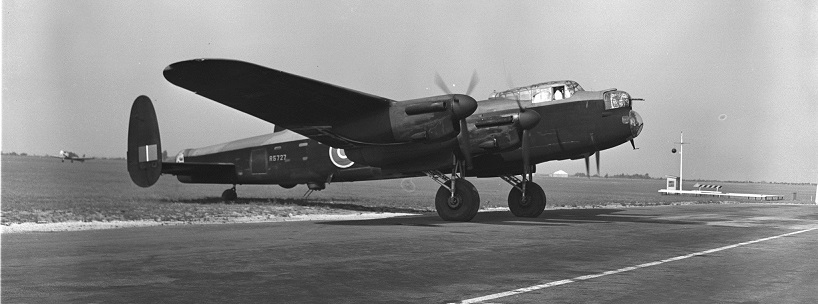The Second World War (1939-1945) - part 2
DID YOU KNOW…

Sgt Guy Gratton of the RCAF’s 162 Squadron, part of Coastal Command, on a patrol out of Reykjavik, Iceland.
The offensive activities of the fighters fell into three main categories: rodeos, rhubarbs and circuses.
Rodeos were fighter sweeps over enemy territory, aimed at drawing Luftwaffe aircraft into the air to fight.
Rhubarbs attacked the enemy on the ground where it would hurt him the most: railroads, munitions factories, airfields, electric lines and gun posts.
A circus was a large formation of bombers with fighter escorts that roared high across the Channel to strike at railroad junctions, airfields, or munitions plants. The goals were to inflict damage upon the enemy’s communications and Industries, and to draw the Luftwaffe into the air where the fighter escort could engage it.

FOCUS ON… THE CANSO

Is it a Canso or a Catalina? They were close cousins, and you have to look at their underbellies to figure it out.
The Consolidated PBY-5 Catalina was a true flying boat and didn’t have a conventional undercarriage so it could only land” on water. The Royal Canadian Air Force (RCAF) began using Catalinas for anti-submarine patrols in 1941 but retired them after the war.
The Consolidated PBY-5A Canso, flown by RCAF squadrons in Coastal Command, was an amphibious aircraft and had a retractable, wheeled undercarriage so it could be set down on either water or land. It came into service with the RCAF in 1941 and served until 1962 in search and rescue, Arctic survey, and transport roles.
FOCUS ON...THE HANDLEY PAGE HALIFAX

The Halifax bomber may have been overshadowed by its more famous cousin, the Lancaster, but it was perhaps Canada’s most important bomber during the Second World War.
The Halifax was also used in Coastal Command and for special operations. The only fully restored Halifax in North America, an Royal Air Force (RAF) Mk VII — tail number NA337 — is on display at the National Air Force Museum of Canada in Trenton, Ontario. It was pulled from the lake in Norway where it had crashed in 1945 and lovingly restored over the course of 10 years.
FOCUS ON… THE AVRO (CANADA) LANCASTER

With its four powerful, growling Merlin engines, the Lancaster is one of the most famous heavy bombers of the war.
For many in southern Ontario, it was part of their everyday work. At its peak of production in 1944, Victory Aircraft Ltd. in Malton, Ontario, employed a force of 10,000 workers — a quarter of them women — to produce 430 Mark X Lancasters destined for No. 6 Group. Eventually, the plant was producing one aircraft per day. Victory Aircraft ended operations in November 1945, and the company became A.V. Roe Canada Ltd., part of the Hawker Siddeley Group. The RCAF flew Lancasters until 1964.
Report a problem or mistake on this page
- Date modified: